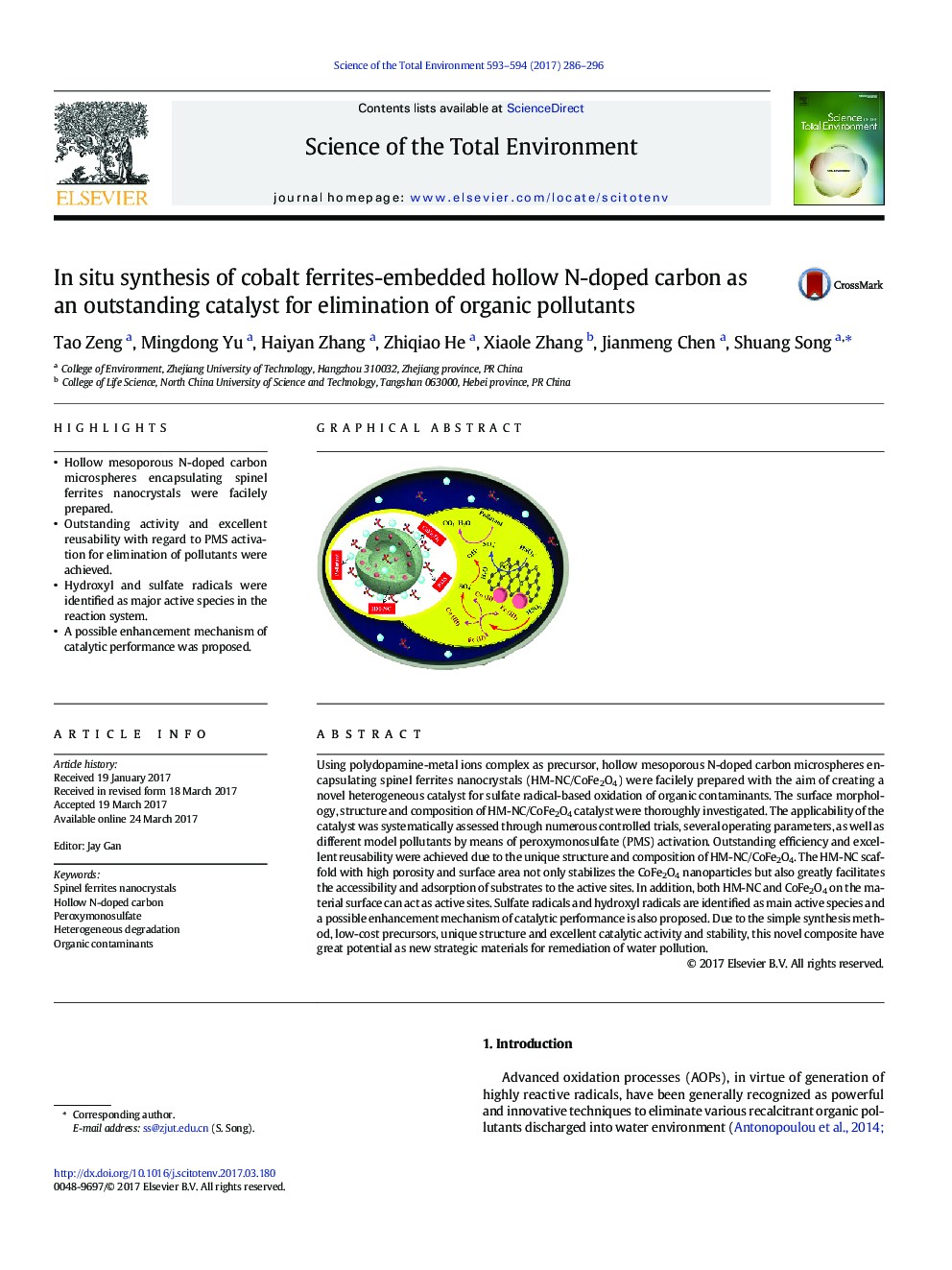| کد مقاله | کد نشریه | سال انتشار | مقاله انگلیسی | نسخه تمام متن |
|---|---|---|---|---|
| 5750856 | 1619702 | 2017 | 11 صفحه PDF | دانلود رایگان |
- Hollow mesoporous N-doped carbon microspheres encapsulating spinel ferrites nanocrystals were facilely prepared.
- Outstanding activity and excellent reusability with regard to PMS activation for elimination of pollutants were achieved.
- Hydroxyl and sulfate radicals were identified as major active species in the reaction system.
- A possible enhancement mechanism of catalytic performance was proposed.
Using polydopamine-metal ions complex as precursor, hollow mesoporous N-doped carbon microspheres encapsulating spinel ferrites nanocrystals (HM-NC/CoFe2O4) were facilely prepared with the aim of creating a novel heterogeneous catalyst for sulfate radical-based oxidation of organic contaminants. The surface morphology, structure and composition of HM-NC/CoFe2O4 catalyst were thoroughly investigated. The applicability of the catalyst was systematically assessed through numerous controlled trials, several operating parameters, as well as different model pollutants by means of peroxymonosulfate (PMS) activation. Outstanding efficiency and excellent reusability were achieved due to the unique structure and composition of HM-NC/CoFe2O4. The HM-NC scaffold with high porosity and surface area not only stabilizes the CoFe2O4 nanoparticles but also greatly facilitates the accessibility and adsorption of substrates to the active sites. In addition, both HM-NC and CoFe2O4 on the material surface can act as active sites. Sulfate radicals and hydroxyl radicals are identified as main active species and a possible enhancement mechanism of catalytic performance is also proposed. Due to the simple synthesis method, low-cost precursors, unique structure and excellent catalytic activity and stability, this novel composite have great potential as new strategic materials for remediation of water pollution.
272
Journal: Science of The Total Environment - Volumes 593â594, 1 September 2017, Pages 286-296
